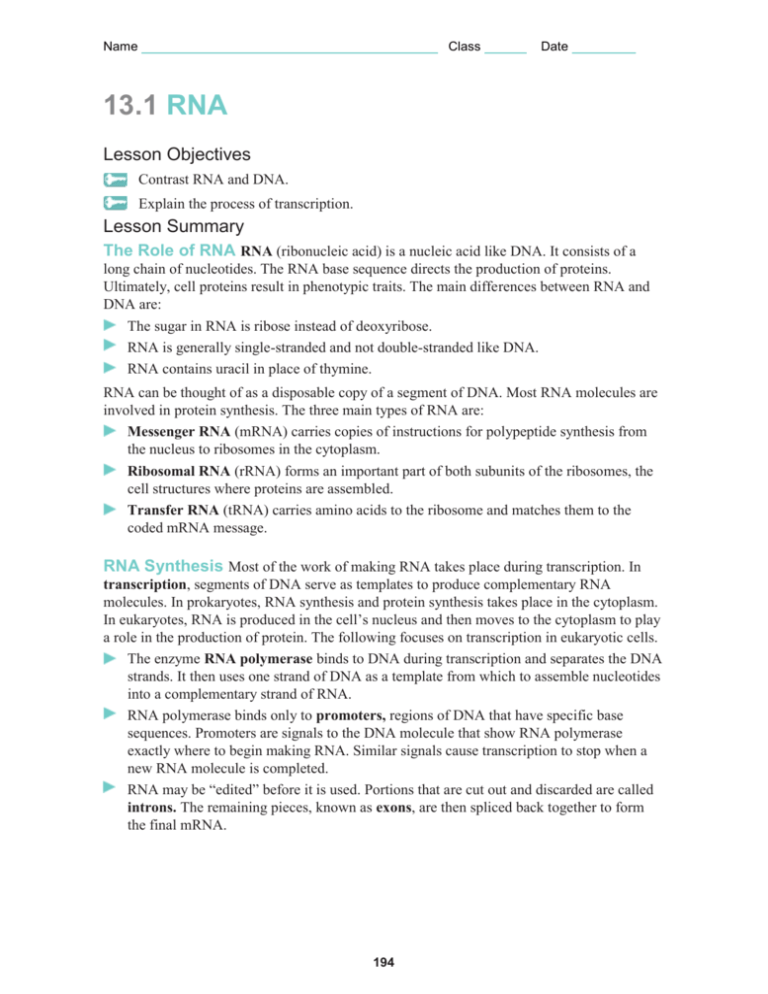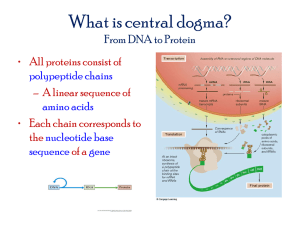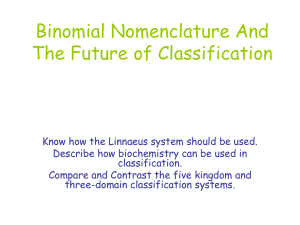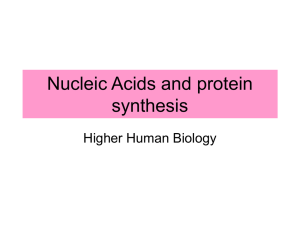13.1 Worksheet
advertisement

Name Class Date 13.1 RNA Lesson Objectives Contrast RNA and DNA. Explain the process of transcription. Lesson Summary The Role of RNA RNA (ribonucleic acid) is a nucleic acid like DNA. It consists of a long chain of nucleotides. The RNA base sequence directs the production of proteins. Ultimately, cell proteins result in phenotypic traits. The main differences between RNA and DNA are: The sugar in RNA is ribose instead of deoxyribose. RNA is generally single-stranded and not double-stranded like DNA. RNA contains uracil in place of thymine. RNA can be thought of as a disposable copy of a segment of DNA. Most RNA molecules are involved in protein synthesis. The three main types of RNA are: Messenger RNA (mRNA) carries copies of instructions for polypeptide synthesis from the nucleus to ribosomes in the cytoplasm. Ribosomal RNA (rRNA) forms an important part of both subunits of the ribosomes, the cell structures where proteins are assembled. Transfer RNA (tRNA) carries amino acids to the ribosome and matches them to the coded mRNA message. RNA Synthesis Most of the work of making RNA takes place during transcription. In transcription, segments of DNA serve as templates to produce complementary RNA molecules. In prokaryotes, RNA synthesis and protein synthesis takes place in the cytoplasm. In eukaryotes, RNA is produced in the cell’s nucleus and then moves to the cytoplasm to play a role in the production of protein. The following focuses on transcription in eukaryotic cells. The enzyme RNA polymerase binds to DNA during transcription and separates the DNA strands. It then uses one strand of DNA as a template from which to assemble nucleotides into a complementary strand of RNA. RNA polymerase binds only to promoters, regions of DNA that have specific base sequences. Promoters are signals to the DNA molecule that show RNA polymerase exactly where to begin making RNA. Similar signals cause transcription to stop when a new RNA molecule is completed. RNA may be “edited” before it is used. Portions that are cut out and discarded are called introns. The remaining pieces, known as exons, are then spliced back together to form the final mRNA. 194 Name Class Date The Role of RNA 1. Complete the table to contrast the structures of DNA and RNA. Sugar Number of Strands Bases DNA RNA 2. On the lines provided, identify each kind of RNA. a. b c. 3. VISUAL ANALOGY The master plan of a building shows how to build and place important parts of the building, such as walls, pipes, and electrical outlets. On the building site, workers use copies of the master plan called blueprints to show them what to do. The master plan is kept in the office. Explain how mRNA works like a blueprint in constructing proteins. 195 Name Class Date RNA Synthesis For Questions 4–10, complete each statement by writing the correct word or words. 4. The process of using DNA to produce complementary RNA molecules is called . 5. The sequence of template. in mRNA complements the sequence in the DNA 6. In eukaryotes, RNA is formed in the 7. The enzyme and then travels to the binds to DNA during transcription. 8. RNA polymerase binds to regions of DNA called signals for transcription. 9. 10. , which are “start” are portions of RNA that are cut out and discarded. are spliced together to make the final mRNA. 11. THINK VISUALLY Sketch the sequence in which pre-mRNA is “edited” after it is made on the DNA template and before it is ready to function as mRNA in the cytoplasm. Show the original DNA, the pre-mRNA, and the final mRNA. Be sure to label exons and introns. Apply the Big idea 12. Use the analogy of the master plan and blueprints used by builders to identify what represents messenger RNA, where the “ribosome” is, and who performs the same kind of job as transfer RNA. Explain your reasoning. 196 .








